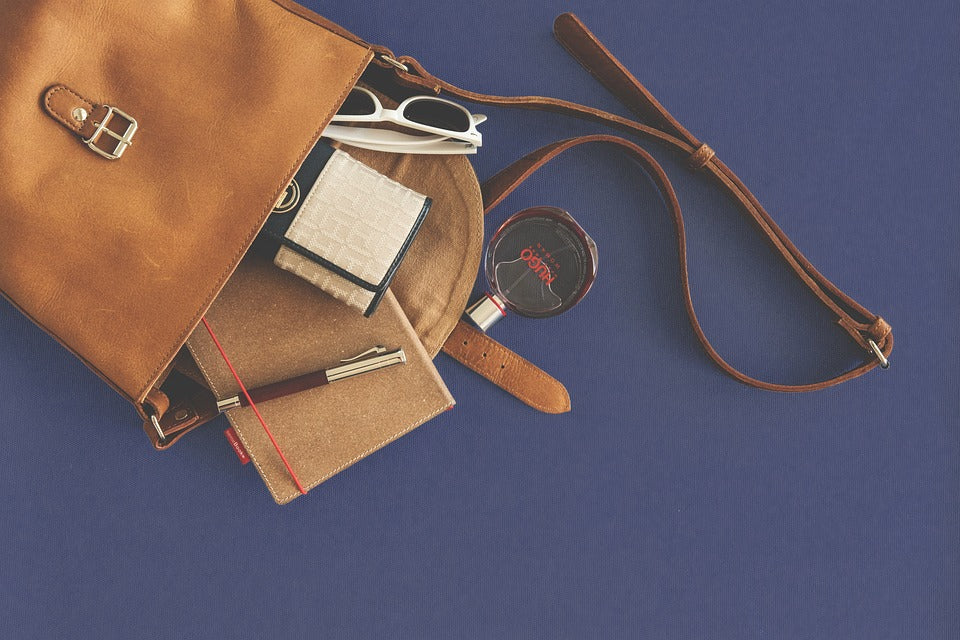Coastal beach themes bring a sense of tranquility and beauty, making them a favorite choice for creative projects. Incorporating these designs into leather purses combines functionality with artistic expression, transforming everyday accessories into unique statement pieces. With the right tools, materials, and techniques, you can turn any leather purse into a coastal masterpiece that evokes the charm of sandy shores and ocean waves.
This guide walks you through the steps to create stunning beach designs on leather purses, ensuring a professional and durable finish.

Materials Needed
1. Leather Purse
Select a smooth-surfaced leather purse for easy paint application. Neutral colors like white, beige, or tan provide an ideal base for beach designs.
2. Leather Preparer & Deglazer
Essential for cleaning and preparing the surface by removing dirt, oils, and existing finishes to ensure paint adhesion.
3. High-Quality Leather Paints
Choose flexible and durable paints in beach-inspired colors, such as sandy beige, ocean blue, seafoam green, and sunset orange.
4. Paintbrushes

Have a variety of brushes on hand, including fine-tip brushes for details and larger brushes for broader strokes.
5. Painter's Tape
Use tape to protect areas you don’t want painted, ensuring clean lines and precise designs.
6. Stencils (Optional)
Stencils of seashells, starfish, waves, and palm trees can help create consistent patterns for your design.
7. Protective Finish
A clear acrylic finisher seals and protects your design, adding durability and a polished look.
Preparing the Leather Surface
1. Cleaning the Purse
Wipe the leather purse with a soft, damp cloth to remove dust and dirt. Follow up with a leather cleaner to eliminate oils and residues that could interfere with paint adhesion.
2. Deglazing the Leather
Apply leather preparer or deglazer to the surface. This step removes any existing finishes, ensuring the leather is ready to absorb the paint effectively.
3. Inspecting and Smoothing
Check for imperfections such as scratches or uneven areas. Sand gently with fine-grade sandpaper if necessary to create a smooth painting surface.

Planning Your Design
1. Sketching the Design
Draft your coastal design on paper to visualize the layout. Popular beach elements include:
- Waves and water ripples.
- Seashells, starfish, and sand dollars.
- Palm trees and sunsets.
2. Positioning and Symmetry
Ensure balance and flow by positioning design elements strategically. For example, place waves at the bottom, seashells in the center, and a sunset at the top.
3. Using Painter's Tape
Mask off hardware, zippers, or any areas you want to remain unpainted. This ensures a clean and professional result.
Applying the Base Coat
1. Choosing the Right Base Color
Select a color that complements your theme. For instance, sandy beige can mimic the beach, while ocean blue sets the stage for water-inspired designs.
2. Techniques for Smooth Application
Use a flat brush or sponge applicator to apply an even base coat. Work in thin layers, allowing each coat to dry fully before applying the next.
3. Allowing Drying Time
Give each layer 1-2 hours to dry. This prevents smudging and ensures a solid foundation for your design.
Creating Coastal Beach Elements
1. Waves
- Use gradients of blue and white to create realistic wave patterns.
- Blend the edges with a sponge for a smooth transition between colors.
2. Seashells and Starfish
- Paint these elements freehand or with stencils for accuracy.
- Add highlights and shadows to give them a three-dimensional appearance.
3. Palm Trees and Sunsets
- Layer shades of orange, pink, and purple for sunsets.
- Use fine brushes to detail palm trees, adding texture to the trunk and leaves.
4. Blending Colors
- Blend adjacent colors to create a harmonious flow. For example, fade sunset hues into the ocean blue background.
Adding Texture and Details

1. Sand-Like Finishes
Use textured brushes or sponges to dab sandy beige paint onto the surface, mimicking the appearance of real sand.
2. Metallic and Pearlescent Paints
Incorporate metallic or pearlescent paints to create shimmering effects reminiscent of sunlight on water or iridescent shells.
3. Highlighting Edges
Outline key elements with contrasting colors to make them stand out. For example, use white to highlight waves or gold for seashell edges.
Sealing and Protecting the Design
1. Applying a Clear Acrylic Finisher
Once the painting is complete, apply a protective sealant using a clean, soft brush. This step prevents wear and enhances durability.
2. Avoiding Streaks
Apply the finisher in thin, even layers to avoid streaks. Allow each layer to dry before applying the next.
3. Allowing Proper Curing Time
Let the purse cure in a cool, dust-free environment for 24-48 hours to ensure the sealant sets completely.
Maintenance of the Beach-Themed Purse
1. Cleaning Tips
Wipe the purse gently with a damp cloth to clean it. Avoid harsh chemicals that can damage the design.
2. Storing Properly
Store the purse in a dust bag or soft cloth to protect it from scratches and environmental damage.
3. Reapplying Protective Finish
Periodically apply a fresh layer of protective finish to maintain the design’s vibrancy and durability.
Creative Tips for Personalization
1. Adding Names or Quotes
Incorporate beach-inspired quotes or names using a fine-tip brush or stencil for a personal touch.
2. Embellishments
Glue small shells, beads, or fabric patches onto the purse to enhance the coastal theme.
3. Experimenting with Colors
Explore unique coastal palettes, such as combining coral pink with seafoam green, for a distinctive look.

(Source: @emiluvpaints)
Transforming a leather purse into a coastal-themed accessory is a fun and rewarding creative project. By following this guide and using quality leather paints and tools, you can achieve a professional finish that captures the beauty of the beach. Whether for personal use or as a thoughtful gift, a coastal leather purse is sure to impress.
For premium paints and leather care products, Angelus Direct offers a trusted range of options perfect for creative projects.
FAQs
Can I use regular paints for leather purses?
No, it’s best to use paints specifically formulated for leather to ensure flexibility and durability. Angelus Direct provides high-quality options tailored for leather projects.
What are the best stencils for beach designs?
Stencils featuring seashells, starfish, waves, and palm trees work well for creating consistent beach patterns.
How can I ensure my paint doesn’t crack over time?
Properly preparing the leather, using flexible paints, and applying a protective finish are key to preventing cracks.
Is a protective finish necessary for durability?
Yes, a protective finish seals the design, making it resistant to wear, scratches, and environmental factors.
What colors work best for a coastal theme?
Beach-inspired colors like sandy beige, ocean blue, seafoam green, and sunset orange are ideal for creating a coastal look.

